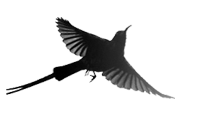
Paarl Bird Sanctuary used to be a very common birding location in the Western Cape, particularly for water birds. The sanctuary is located about 60km from Cape Town and can easily be reached via the N1 into Paarl. The area of the sanctuary is around 45 hectares and offers some excellent birding. The Paarl Bird Sanctuary is a sewage treatment facility so when you visit, bear in mind that you shouldn’t be expecting the scent of flowers in the air, with that said the worse is mainly upon entry and not really too bad around the ponds, in fact there are some benches set out along the pond just after entry where one could sit. Unfortunately, in recent years the sanctuary has seen far less visitors due to security issues. It is highly recommended that you only visit on weekends when there is extra security available, as there have been incidents as recent as 2017.
The sanctuary is free of charge to enter and most of the birding is done by driving along the roads alongside the ponds, where one can easily stop and scan for anything of interest and either shoot from their car, or park on the side and get out – though with the roads being narrow in some areas, you are urged to consider the other birders that may want to pass through the road. The sanctuary has also seen host to some very interesting rarities over the years including African Jacana, Greenbacked Heron, American Purple Gallinule, Greater Painted Snipe, Goliath Heron, African Pied Wagtail, Squacco Heron and many more.

A mistake I made the first few times visiting the area was assuming that I had to pass the gate area (not the main boom, but the entrance near where the fence is later on). This caused me to miss some of my targets which seemed to exist solely on the couple of dams on the right, before you reach the fence area mentioned above. This area is where one can find the sought after Fulvous Duck sometimes and where I also encountered a large number of White-Faced Ducks. These ponds tend to be very active from the few times I’ve gone to them now knowing that they are there, and definitely wouldn’t make a visit without spending quite a bit of time looking hard through the masses of Grey Headed and Hartlaubs’ Gulls that tend to populate them. Around these two first dams I found a lot of other smaller, non-water birds too in the form of Brown-throated Martins and a Malachite Kingfisher which were feeding from the very small concrete pools in the one corner.
Once one passes through the gate (at the end of the road, past the boom) you can either turn right or go straight, though to keep the traffic flowing in a single way, straight would be the more commonly taken route – and you don’t want to be stuck reversing the way. You will immediately come to a more tree covered area with a pond on your right with some benches if I recall correctly, this pond is generally fairly quiet in my experience but naturally birds move around and what is quiet one day may be teeming the next. Of interest by this first pond was a Cape Canary, a Juvenile Grey Heron and not much else. If you continue forward you will come to another dam on your right, with a view across to a bank where you can often see African Spoonbills, Great White Pelicans, Cormorants and if you’re lucky a perched African Fish Eagle.

Next is the large pond which extends to the other side of the sanctuary, on this pond you can expect to see vast numbers of Little Grebe, possible Black-Necked Grebes, a variety of Teals and Ducks and Egyptian Geese. As you reach the end of the pond the road begins to take a right where you will find yourself moving alone the narrow road with the main dam on your right and a small harder to view one on the left, this left pond which usually has a lot of growth on it, is where the Jacanas tend to be seen, so it is worth a scan of the surface. Also in the solitary line of trees just within the pond, near to the road is where you can often find a large number of Egrets and Herons, look on the left to the shallow waters for possible Three-Banded Plovers.
If you then continue, the road will take a right and you will be moving alongside the main pond again, there will be a bank area with stones where you can often see large groups of Cormorants and various ducks. Moving onwards you will have a small view through the trees of the other pond, though this is also accessed by continuing, following the path which takes a right along the fence and then after a short while taking the path to the right, this path is narrow and getting in and out of the area isn’t easy, it may be worth parking just outside of this path if you’re hesitant to do reversing over a small bridge. This area is very good if you’re looking to get closer to the Pelicans and Spoonbills than the other areas.

Assuming one didn’t take that right turn or merely got out alright… You will then come up to a bird hide on your right, there is usually ample area to park here so that shouldn’t be a problem. I haven’t had too much success from that hide personally, but I’m sure there are others who have.
GPS co-ordinates: 33° 41′ 28.90″ S , 18° 58′ 36.74″ E
